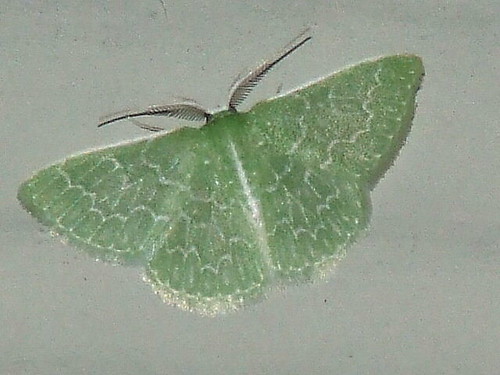Unknown moth species.
Houston Heights, Texas. 27 October 2006,
The photographer writes; This green moth visits my breezeway at night in
response to the lights. To get this flash shot I had to stand back and use the
macro-zoom feature on the Fuji Finepix 5200. Presumably the green wing color
allows the moth to safely roost on green tree leaves in the daytime with the
white markings likely helping to blend with leaf veination. The moth is about
3/4 inch wide along the rear wing margins. This species shows up with some
frequency. I think it is beautiful and mysterious.
Image: Biosparite.
Can anyone name this species of moth?
I am receiving so many gorgeous pictures from you, dear readers, that I am overwhelmed by the beauty of the images and the creatures and places in them. If you have a high-resolution digitized nature image (I prefer JPG format) that you'd like to share with your fellow readers, feel free to email it to me, along with information about the image and how you'd like it to be credited.
.


Synchlora aerata or S. frondaria, maybe?
I just love emerald geometrid moths. Gorgeous photo!